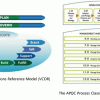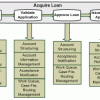Strategic advice to leverage new technologies
Technology is at the heart of nearly every enterprise, enabling new business models and strategies, and serving as the catalyst to industry convergence. Leveraging the right technology can improve business outcomes, providing intelligence and insights that help you make more informed and accurate decisions. From finding patterns in data through data science, to curating relevant insights with data analytics, to the predictive abilities and innumerable applications of AI, to solving challenging business problems with ML, NLP, and knowledge graphs, technology has brought decision-making to a more intelligent level. Keep pace with the technology trends, opportunities, applications, and real-world use cases that will move your organization closer to its transformation and business goals.
Recently Published
Emergent Agility: Best Practice Equivalence
Best practices are prescriptive, and Agile development opposes prescription. So, in this sense, there are no Agile best practices. Managers faced with a need to impose new processes are always in search of guidance, however, and need to know that they are doing what they have set out to do -- or at least are on track to do so. Guidance, whether it is called "best practices," "good things to do," or "useful approaches," is still necessary.
Achieving Operational Excellence
Achieving Operational Excellence
In a 2012 Cutter IT Journal article entitled "Business Capability Architecture Is the Tie that Binds All," Andrew Guitarte discussed how to use business capabilities to improve efforts related to business strategy, enterprise change, and project portfolio prioritization. We concur that strategy, enterprise change, and portfolio management are managed more effectively using business architecture, and agree that capabilities are a component of business architecture.
Not Big Data; Big Confusion
The Technical Debt Assessment
"Context over content" is a good metaphor to keep in mind when considering a technical debt assessment, reduction, and prevention engagement. Specific patterns in your code and the intricacies of your programming environment are paramount factors in determining how general insights will be turned into actions. In other words, it is unlikely that a technical debt engagement in your company will evolve along similar lines to those taking place in your competitor's "shop" down the street.














